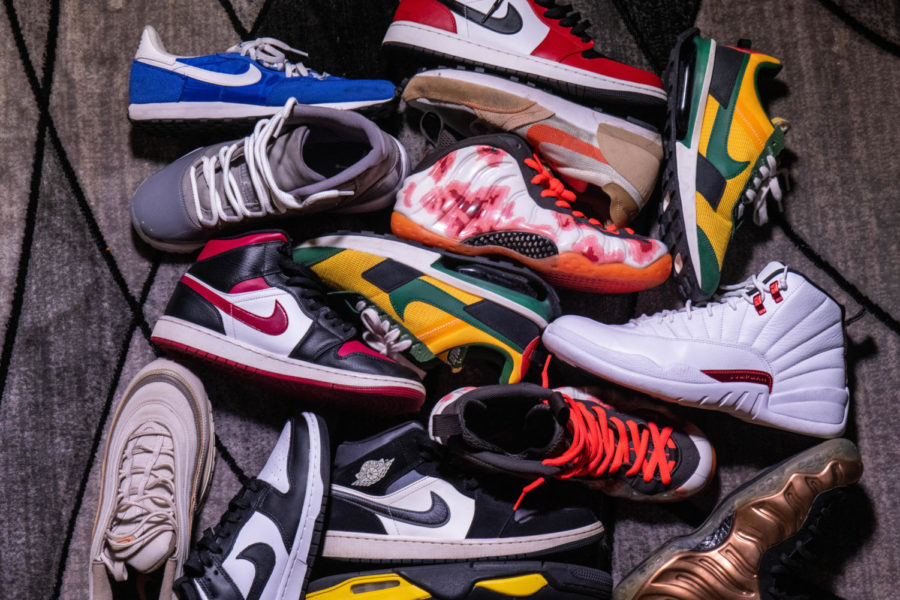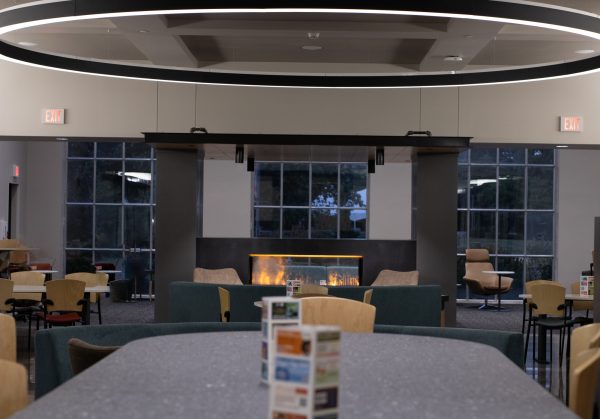Fashion vs. function: What do you look for in a shoe?
Shoe collection on May, 3, 2023.
A wide array of shoe styles are present across Iowa State’s campus: highly-cushioned Hokas, platform Converse, retro Nikes, high-top Vans, open-toed Birkenstocks – the list goes on.
On average, each American owns six pairs of sneakers, according to an article by ArchUSA. With the option to own and wear several pairs of shoes, students reflect on their footwear preferences in relation to comfort and style.
Kinesiology professor Tim Derrick teaches biomechanics and functional anatomy and conducts research in biomechanics, specifically injury prevention in running.
“My opinion is if you’re not getting injured, you probably don’t need to worry about [your shoes] very much,” Derrick said.
Prior to his 26 years at Iowa State, Derrick started testing running shoes produced by companies such as ASICS, Saucony and New Balance. He also has experience working with shoe rating companies like Consumer Reports and Runner’s World.
While walking on campus, Derrick takes note of the trends in both style and wear and tear of students’ shoes. Most walking and running shoes are made to last for approximately 300 to 400 miles, according to Derrick.
“Probably the number one thing I see is people wearing their shoes too long,” Derrick said. “The midsole is broken down. When they step, they overpronate, which can cause some problems.”
When individuals overpronate, their feet roll too far inward while walking or running. With a neutral gait, the outer part of an individual’s foot will usually make contact with the ground before rolling inward slightly, ending in a straight, well-aligned position. Overpronation is often seen in people with flat feet, as their arches collapse more easily than those with medium or high arches.
Ethan Beacom, a senior studying physics, observes the impact that certain shoes have on his feet over a prolonged period. Beacom typically prefers to wear shoes made by Nike or New Balance.
“I have really bad flat feet, so if I wear shoes [with less support], they hurt if I walk around for a while,” Beacom said. “Sometimes, if that’s bad, I wear my beefed-up running shoes with like two-inch soles.”
As highlighted by Beacom, walking and running shoes with supple cushioning are on the rise. Derrick also noted that shoe trends can be seen across different eras. In previous years, minimalist shoes with thin midsoles were preferred by many, and now, the pendulum seems to have swung the other way.
Madison Kauth, a senior studying kinesiology and health, runs in the Brooks Ghost, a popular shoe choice among distance runners. Although she switches between shoes based on her daily activities, Kauth gravitates toward more comfortable styles.
“I tend to go with the option best for running or for my feet or what’s going to not make my back hurt or feet hurt,” Kauth said.
On the occasions when she wears less functional shoes, Kauth notices a difference in both her body and mind.
“I wouldn’t say it’s bad,” Kauth said. “I just notice I’m not as comfortable or I’m hyper-aware of the fact that–not really that my feet hurt–but like, ‘Oh, this is maybe not the best thing for me right now.’”
Similarly, Dana Thacker, a senior studying data science, has observed a contrast between the different pairs of shoes she wears. Thacker said the main shoes she gravitates toward are Nike and Vans.
“I have a few pairs of shoes that are cute, but they’re not as comfortable, so I have to mentally prepare myself when I’m going to wear them for the day,” Thacker said. “I try and wear those on days where I have less lectures, [and] I’m walking around campus a little bit less.”
For individuals wishing to find more comfort in their footwear, Derrick recommends choosing a high-quality model made by any name-brand running shoe company.
“What I would look at once you decide what general type of shoe is the comfort; you want to find one that’s comfortable on your foot,” Derrick said. “That typically means it’s working with your foot instead of against your foot, and so there will be a tendency to get fewer injuries.”
Although the day-to-day wearing of less comfortable shoes around campus might not have any impact on one’s physical health, Derrick said some individuals can experience issues down the road.
“You might find that what you can do at this stage in your life is going to cause injury later in your life,” Derrick said. “There are all kinds of injuries that you can get from a bad pair of shoes.”
Your donation will support the student journalists of the Iowa State Daily. Your contribution will allow us to purchase equipment, send our student journalists to conferences and off-set their cost of living so they can continue to do best-in-the-nation work at the Iowa State Daily.












